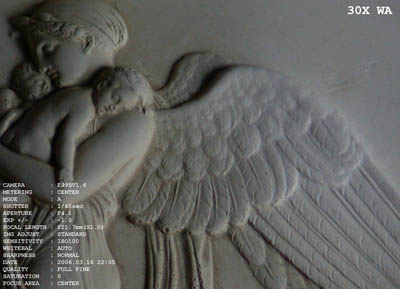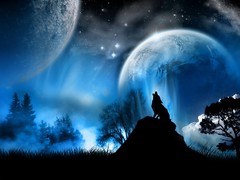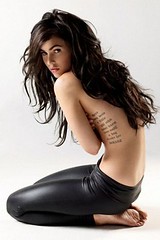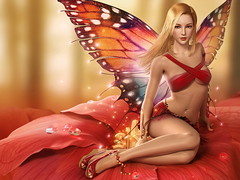
It's a curious thing when I read articles about digiscoping with 30X or 40X fixed wide-angle eyepieces over 20-60X zoom eyepieces. Many will concur because it stems from the reasonable premise that fixed eyepieces have fewer lens elements than zooms - fewer elements equals less light reflectivity and distortion.
Historically speaking, the standard in digiscoping results were set by digiscopers like Laurence Poh and Ann Cook using their 20-60X zooms at 20X for the bulk of their work - everyone wants to emulate them. Nearly all the images in my digiscoping gallery were taken the same way.
I hope to demonstrate it depends more on your digiscoping technique and not which eyepiece format you use. Another crucial factor is which manufacturer's products you're using (camera, adapter, etc.), but that's too exhaustive for the scope of this particular article.
Consider the following images:
http://www.birddigiscoper.com/testimga.jpg
http://www.birddigiscoper.com/testimgb.jpg
http://www.birddigiscoper.com/testimgc.jpg
All three images were taken through my Swarovski AT80 HD / Nikon Coolpix 995 at the same distance, just slightly beyond the close-focus of the scope:
- One image was taken with a 30X WA fixed eyepiece.
- Another was taken with a 20-60X zoom at 20X with the digital camera’s optical zoom set to match the apparent magnification.
- And then one was taken with a 20-60X zoom at 30X.
Digiscoping expert George Raiche wrote:
"Aside from being one more thing to fiddle with, a zoom lens is a severe optical compromise. No, not in image quality; at the high end, the image through a zoom lens is as crisp and color-correct as that through a fixed eyepiece. The compromise comes with field of view. Field of view--the most valuable optical commodity at high magnification--is usually much larger for a wide angle fixed lens as for the zoom at identical magnification."I believe George is correct if you want to digiscope at eyepiece magnifications beyond 20X, but I don't do that. The maximum exit pupil comes from 80mm divided by 20X = 4mm of light (versus 2.6mm for 30X [even on fixed] and 2mm at 40X). Less light = slower shutter speeds = blurred images = the #1 complaint of new digiscopers.
In the above images you can see that the 30X WA rendered the slowest shutter speed by a negligible amount (1/26th versus 1/29th and 1/30th of a second). Note that the 20X image, though zoomed beyond what was required to eliminate vignetting, used an f-ratio of 5.1 (in contrast to f/4 on the other two shots). Thus, if I had backed off the digital camera’s optical zoom I could have improved my shutter speed while maintaining an unvignetted image - there would simply be less overall combined magnification (eyepiece and optical zoom).
If you want to know the secret of how world class digiscopers obtain incredible sharpness and detail in their images, it's by getting closer to the birds and using the 20-60X zoom at 20X with the lowest optical zoom on the digital camera that eliminates any vignetting.
Compose and frame your shots by varying your distance to the bird, and 20X (with just a little optical zoom on the digital camera) will offer the greatest flexibility for getting the shot with excellent crispness. In fact, you can see that the detail between the three images is negligible.
For pretty portraiture, composition is an important factor. By lowering the overall magnification and staying at 20X on the zoom eyepiece can mean increased flexibility when composing your subject. Framing an entire bird (beak to tail tip) with a 30X eyepiece may require you to back too far away...and in terms of preserving detail, that's worse than increasing the digital camera’s optical zoom with a zoom eyepiece at 20X!
An interesting experiment would be to digiscope the plaque at the appropriate distance at 20X on the zoom to render the same subject in size to what can be framed with the 30X WA eyepiece. My experience tells me the zoom eyepiece at 20X would not only exceed in detail versus the 30X WA (because I'd be much closer) , but I should also improve my shutter speed. I realize one of the tremendous advantages with digiscoping is that you don't have to be as close, but even 20X on its own is still a lot of focal length to work with.
Oh heck, let’s try it…
Using 30X WA eyepiece:
http://www.birddigiscoper.com/testimgd.jpg
Next, using 20-60X zoom @ 20X, but moving closer to the subject to match magnification (slight optical zoom adjustment required):
http://www.birddigiscoper.com/testimge.jpg
Bingo! Just exactly as I thought and note the shutter speed improvement from 1/45th of a second to 1/105th of a second. That's how I do it and why I always recommend that you digiscope at the lowest possible eyepiece magnification. In my opinion, zoom eyepieces offer the birder the greatest utility for not only observational use, but are also the best for digiscoping if your aim is close-up pretty portraiture of birds. Hey, that’s what I like to do.

















